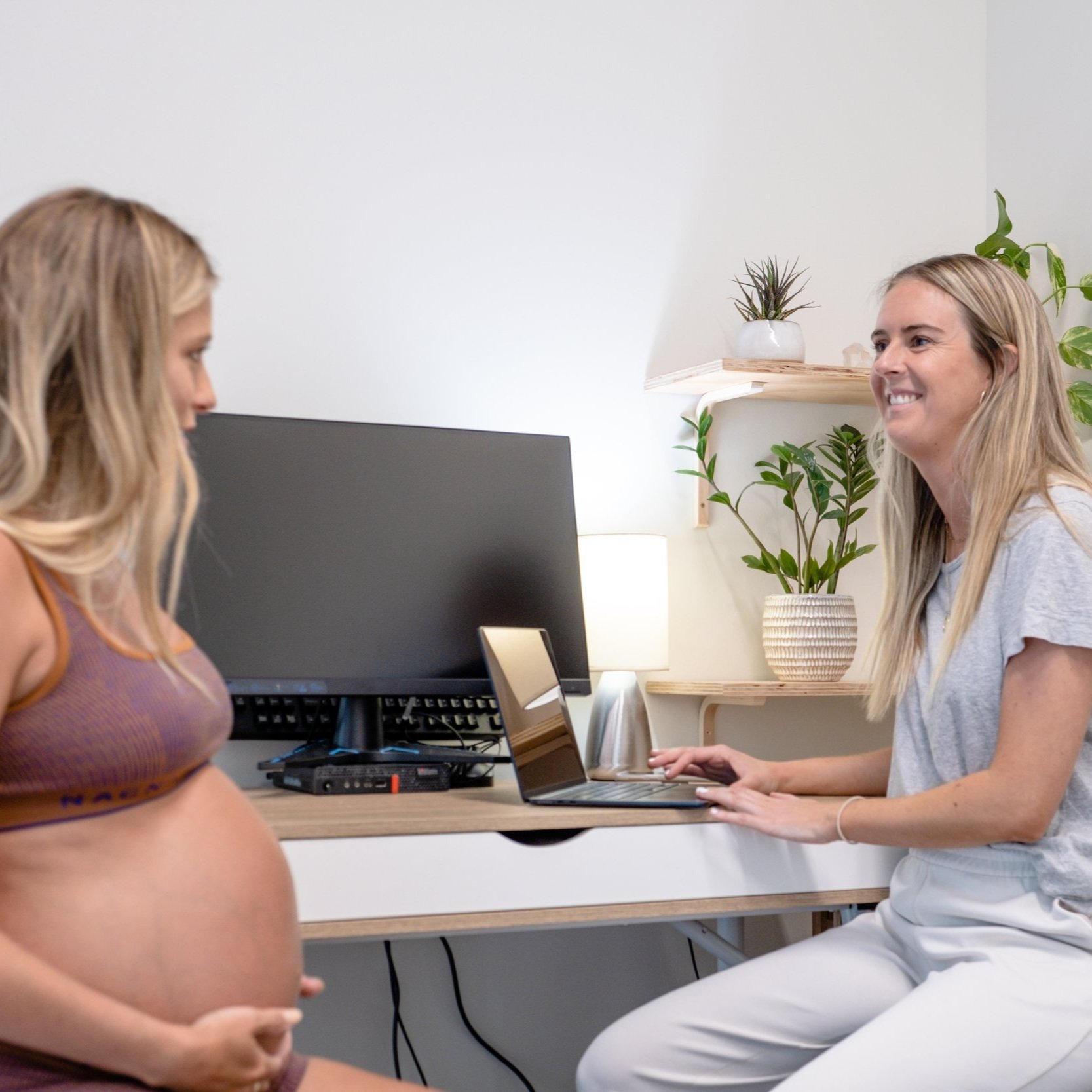Osteopathy.
Osteopathy is a gentle, holistic form of healthcare that aims to support and respect the inherent self-healing mechanisms of the body
Osteopaths understand that you must treat the whole person (mind, body and spirit) and not just the presenting symptom. Osteopaths achieve this by focusing on how the muscles, fascia, joints, ligaments, nerves, connective tissue, circulation and internal organs function as a holistic unit.
Using skilled evaluation and diagnostic skills, osteopaths can identify important types of dysfunction and movement restrictions within the body. We utilize many different treatment techniques such as myofascial release, joint mobilization, soft tissue massage, muscle energy technique, gentle indirect techniques, stretching, joint manipulation, dry needling and lifestyle, exercise and rehab advice.
Osteopathy is based on the philosophy that the body functions as a whole. Our approach considers all aspects of your health including stress, exercise, sleep quality, diet, work demands, support networks and mental health. When our bodies are repetitively exposed to stress (physical or emotional), the body’s ability to self-heal and regulate is diminished. This can predispose to pain, discomfort or injury.

Osteopathy can help with:
✔︎ Pelvic girdle pain ✔︎ Low back pain and sciatica
✔︎ Coccyx pain ✔︎ Rib pain and breathing dysfunction
✔︎ Pregnancy & post partum related complaints ✔︎ Hip and gluteal pain
✔︎ Labour and birth preparation ✔︎ Neck pain, headaches and migraines
✔︎ Pain associated with endometriosis and adenomyosis ✔︎ Neck and jaw (TMJ) pain
✔︎ Breastfeeding related complaints ✔︎ Wrist pain, carpal tunnel, De Quervain's tenosynovitis
✔︎ Light bladder leakage & urgency ✔︎ Low back pain and sciatica
✔︎ Dyspareunia (painful intercourse) ✔︎ Menstrual cramps
✔︎ Pudendal Neuralgia ✔︎ Vaginismus and vulvodynia
✔︎ Scar tissue mobilization (C-section, perineal or episiotomy) ✔︎ Pelvic organ prolapse
holistic health care..
Although I have a particular focus on women’s health care, my treatments are not limited and I have extensive experience treating and managing a wide variety of conditions
Some
FAQ’s
-
Osteopathy is a gentle, holistic form of healthcare that aims to support and respect the inherent self-healing mechanisms of the body. Osteopaths understand that you must treat the whole person (mind, body and spirit) and not just the presenting symptom. Osteopaths achieve this by focusing on how the muscles, fascia, joints, ligaments, nerves, connective tissue, circulation and internal organs function as a holistic unit.
Osteopaths utilize many different treatment techniques such as myofascial release, joint mobilization, soft tissue massage, muscle energy technique, gentle indirect techniques, stretching, joint manipulation, dry needling and lifestyle, exercise and rehab advice.
Osteopathy is based on the philosophy that the body functions as a whole. Our approach considers all aspects of your health including stress, exercise, sleep quality, diet, work demands, support networks and mental health. When our bodies are repetitively exposed to stress (physical or emotional), the body’s ability to self-heal and regulate is diminished. This can predispose to pain, discomfort or injury. -
Osteopaths are commonly known for treating pain and discomfort during pregnancy and the postpartum period.
During pregnancy, a woman's body undergoes many changes in a relatively short period of time. This includes a shift in her center of gravity, the weight of a growing baby, postural changes and ligament laxity. This means that her body has to constantly adapt and compensate for the rapid changes that are occurring.
When the ligaments of your pelvis become more relaxed and begin to soften, the body has to adapt and your muscles are required to work harder in order to maintain good support for the pelvic joints.
Common complaints that people present to an osteopath during pregnancy include generalized pelvic girdle pain, low back or hip pain, reflux, indigestion, pelvic instability, sacroiliac joint (SIJ) pain, coccyx pain, pubic symphysis dysfunction (SPD), round ligament pain, swollen ankles, feet and hands, headaches, nausea, neck pain and rib pain.
Common complaints in the postpartum period include neck and shoulder pain from breastfeeding, pelvic girdle pain, low back pain, incontinence, prolapse, peroneal and episiotomy scar adhesions, pain with intercourse (dyspareunia), wrist and thumb pain, de quervain's tenosynovitis, rib pain, cesarean scar pain or altered sensation and abdominal pain. -
With a complex condition like endometriosis, it is vital to take a holistic and multifactorial approach to this disease. As osteopaths, we consider the whole body - how all of the systems interrelate and function together. When treating a woman with endometriosis, we consider how the musculoskeletal, reproductive, gastrointestinal, respiratory and nervous systems all interact as a holistic unit.
Osteopathy has been shown to reduce chronic pelvic pain by decreasing pelvic floor tension, improving breathing mechanics and lymphatic drainage, calming the nervous system, influencing the ligaments that support your organs, improving scar tissue mobility and increasing mobility of the hips, low back, pelvis and rib cage.
Improved function of the musculoskeletal system and nervous system improves pain levels, increases blood flow, decreases inflammation and aids in tissue healing. Osteopaths can also prescribe self-management strategies, home strength and mobility exercises, breathing techniques, tools to support sleep, stress management and ergonomic advice.
-
A pelvic health appointment consists of a thorough case history, examination and treatment of pelvic floor concerns relating to:
- Pelvic, hip, low back and coccyx pain
- Caesarian, perineal and episiotomy scar tissue mobilization
- Post natal check up
- Urinary incontinence and urgency
- Pelvic floor dysfunction related to underlying issues such as endometriosis, adenomyosis, pelvic surgery
- Pain with penetration (eg. inserting tampons, pap smears and sexual intercourse)We alway consider the whole body's influence on the pelvic floor muscles and fascia. The pelvic floor is such an important component in all the above complaints but she will always assess what the rest of the body is doing - especially the foot, hip, rib cage, diaphragm and jaw!
At your initial appointment, a thorough case history will be taken, followed by any relevant physical, orthopedic and osteopathic examinations. This may include getting you to perform some physical movements, balance exercises, strength testing and assessing your breathing mechanics. We will also screen for any restrictions in other areas of your body that can contribute to pelvic dysfunction.
If indicated, an internal pelvic floor examination and treatment can be performed if this is something you are comfortable with. But there are many other ways to influence the pelvic floor so an internal assessment is never required as part of your consultation.
Lifestyle factors, dietary changes, exercise advice and stress management tools are also often included as part of a pelvic health treatment plan. -
Yes, headaches are one of the most common complaints that osteopaths treat! There are many causes of headaches so it is important to find the root cause of what is driving it. There is a difference between headaches and migraines so making this distinction is also important.
Common causes of headaches include tension from neck or shoulder muscles, joint restrictions, jaw dysfunction (clenching or grinding), dehydration, food intolerances, hormonal imbalances, environmental allergies, sinus issues, poor breathing mechanics and posture (work and sleep).
Headaches can also be accompanied by nausea, dizziness, visual changes and brain fog. It is important to rule out any underlying health issues if you have new or chronic headaches. -
Abhyanga massage + closing of the bones ceremony is a beautiful postpartum ritual to nurture, ground, and support the nervous system.
This ceremony holds space for women to come back into their body and womb space after childbirth
Abhyanga is is a traditional Indian practice that consists of a nourishing warm oil massage. It is a practice of self-love, promotes grounding, supports the nervous system, increases circulation, stimulates the internal organs of the body and assists in elimination of toxins from the body.
Closing of the Bones is a Mayan practice for post partum mothers. After giving birth the women’s body is completely open physically and energetically. A closing of the bones ceremony re-creates a womb-like, held and nurtured feeling and physically applies pressure to the hips and pelvis to help the mother come back to her body.
Ideally the ceremony will take place within 40 days post-birth, however it can be done any time after birth, even years, with the same effect. You will know when the time feels right.
Belly binding can be added on to your treatment at the end if this is something you are interested in.
Have more questions? Please contact me here.

“When women support each other, incredible things happen”
⎼ Unknown
Lets work together!
I cannot wait to meet you and
support you on your health journey
For more information about my services click the link below



